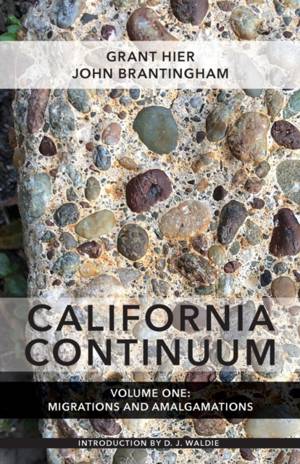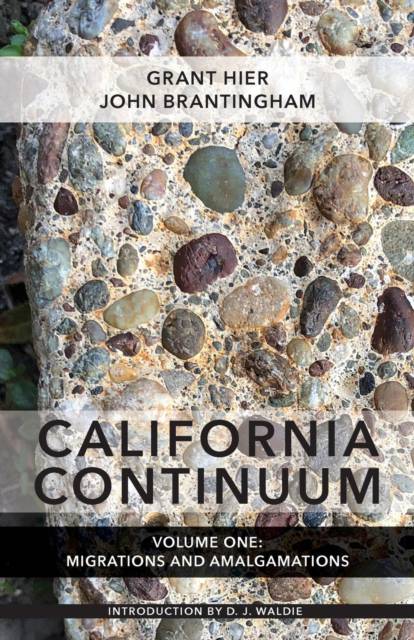
- Retrait gratuit dans votre magasin Club
- 7.000.000 titres dans notre catalogue
- Payer en toute sécurité
- Toujours un magasin près de chez vous
- Retrait gratuit dans votre magasin Club
- 7.000.000 titres dans notre catalogue
- Payer en toute sécurité
- Toujours un magasin près de chez vous
California Continuum, Volume 1
Migrations and Amalgamations
Grant Hier, John BrantinghamDescription
California Continuum, Volume 1: Migrations and Amalgamations is a nonlinear look at little discussed aspects of the history of California. Hier and Brantingham look as far back as California's geologic past, fast forwarding to the age of the mastodons, then to the time when only Native Americans inhabited this land and finally to the present age.
Rather than following a direct narrative, they explore themes that have run through California. One theme is the violence that is endemic to the state. For example, they write about various workers who helped to construct the brick that struck Reginald Denny. In another, they dramatize the California Water War that William Mulholland helped to ignite. They write about a number of the riots and civil uprisings in the state's history including the Zoot Suit Riots and the Rodney King Uprising.
Another theme is migration. California is a multicultural state whose history has been shaped by people following sometimes unrealistic dreams. They write about people who want to break into the movies, people fleeing war and terror, people looking for economic security, and people who are looking for freedom from racism.
In still another theme, they look at the way that the natural world has affected the people who have lived in the state. California's deserts, waterways, and forests have shaped and in many ways predetermined the way that the people of this area live, but that's not the whole story. There have been at least two competing edenic visions of California. The first is characterized by John Muir who saw the state as being perfect when it is untouched. He believed it was a kind of natural paradise and so do many of the characters of this collection. Another vision can be characterized by the way William Mulholland saw the state. He saw it as a paradise to be created where the potential for agriculture was unlimited, and that agriculture could create wealth and beauty. Other characters live inside this dream of the state.
Grant Hier and John Brantingham come to no hard conclusions about the history of California. They believe that conclusions negate the complexity of the state and exclude some of the more important aspects of any culture or period of time. When someone defines history, important details and people are inevitably left out. Of course, they are not able to capture all of the history of the state either; no one will ever be able to do so, which is why this is the first volume in what they hope will be a long series of books with many writers that extends beyond them. There is no way to completely capture California, but they hope a diversity of voices will be able to give a richer sense of the place.
Spécifications
Parties prenantes
- Auteur(s) :
- Editeur:
Contenu
- Nombre de pages :
- 258
- Langue:
- Anglais
Caractéristiques
- EAN:
- 9781938349812
- Date de parution :
- 30-03-19
- Format:
- Livre broché
- Format numérique:
- Trade paperback (VS)
- Dimensions :
- 140 mm x 216 mm
- Poids :
- 331 g







